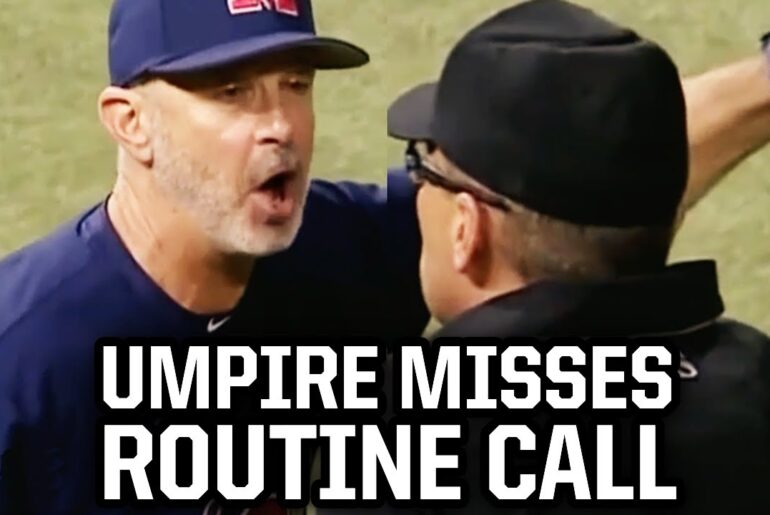With the bases loaded and the game on the line, tensions run high as the pitcher prepares to face the batter. Each pitch becomes critical, and every decision carries significant weight. Let’s take a closer look at how this pivotal at-bat unfolded.
The Pitch Sequence
The first pitch is a low fastball, tempting the batter to swing, but he wisely holds off, recognizing it’s not an ideal pitch to attack. The count now sits at 1-0, giving the batter a slight advantage.
The pitcher follows up with a low breaking ball, hoping to catch the batter off guard. It’s a risky move, as a well-executed breaking ball can induce a swing-and-miss, but it also carries the risk of falling into the dirt and potentially advancing the runners. The batter remains patient and disciplined, refraining from swinging. The count now stands at 2-0, heavily favoring the batter.
Sensing the urgency to regain control, the pitcher delivers a fastball in the strike zone. The batter swings, but the pitch catches enough of the plate to earn a strike. The count is now 2-1, giving the pitcher some much-needed breathing room.
The pitcher continues to mix up his pitches, opting for another breaking ball. The batter stays composed, recognizing it’s not the right pitch to attack. He lets it go by, bringing the count to 3-1. With a favorable count, the batter has a slight advantage and can anticipate a more hittable pitch.
In an effort to keep the batter off balance, the pitcher returns to his fastball. The batter aggressively swings at it, making solid contact, but unfortunately, he fouls it off. The count is now full at 3-2, setting the stage for a critical moment.
Undeterred, the pitcher decides to go back to his breaking ball. The batter tenses up, uncertain of what’s coming next. He takes a tentative swing, hoping to make contact, but he comes up empty. Strike three!
The Umpire’s Call
As the pitcher and catcher celebrate their victory, the batter and his team erupt in disbelief. The umpire, known as “Blue,” has made a call that leaves them stunned. He signals strike three, indicating that the batter is out.
Controversy and Ejection
The controversial call sparks a heated argument between the manager, Phil Nevin, and the umpire. Nevin passionately defends his player, vehemently expressing his frustration at the perceived injustice. Unfortunately, his emotional outburst leads to his ejection from the game. As Nevin is escorted off the field, he tosses his gum in frustration, a symbolic gesture highlighting the gravity of the situation.
Evaluating the Call
Nevin’s protest stems from his belief that the umpire missed a crucial call in a critical moment. He contends that the pitch was undeniably low and should have been called a ball, resulting in an RBI walk. Nevin points out the inconsistency in similar pitches thrown by the opposing team’s pitcher, which were called in their favor. He argues that both pitchers’ offerings were at the same height but received different calls.
Possible Interpretation
A theory emerges, suggesting that the umpire’s judgment may have been influenced by the positioning of the catcher’s back knee. If the umpire used this knee as a reference point, it might explain the discrepancy in the calls. However, this theory remains speculative and requires further investigation.
The Outcome
The questionable call ultimately alters the course of the game. Instead of facing Trout, one of the game’s top hitters, with two outs and the bases loaded, the pitcher manages to retire him with only one out. The inning ends with the score at 4-2, depriving the batting team of



